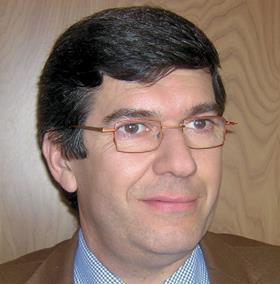
Vincent Faugier is president of aop Abricot de France, the association that connects 23 apricot growers and organisations across the country. Vincent has more than a quarter of a century’s experience in the fresh produce industry.
Please describe your current role in the fresh produce industry.
VF: As president of the French apricot producers organisation, I try to promote this product all over Europe and to bring back the different points of view on our strategy. The French producers are really dynamic. Apricot is currently having its season. It runs with the sun during the summertime and the new varieties allow the industry to work from June to September.
What have you learned recently as a result of your experience?
VF: During the course of this period I have noticed a very important evolution. French consumers are no longer connected to the producers. Until the Seventies they had at least one member of their family who lived or worked in the country and now that simply isn’t the case. People are out of touch with the season and the weather except when it comes to deciding where to go on holiday or what to wear.
What are the greatest challenges you have found in your role?
VF: The real challenge is to help the producers to have the right variety at the right place and with the right way of working it, to obtain the best result for the consumers, who are very smart on advertising and publicity.
Apricots grow outside like all other agricultural products and they differ from year to year in terms of quality and quantity. That is the greatest challenge – to organise each season around this, the production difficulties and the consumer’s point of view through a very strict marketing organisation.
Apricot is a very mysterious fruit: the size, the colour, the taste have changed a lot in the last 20 years. And that is just the beginning when we look at the research done every year. Some French producers are involved in new varietal research, but it‘s rather difficult to forecast how a retailer will organise their apricot displays in the future. It should be like a tomato presentation, based on different colours (yellow, orange with or without red blush, red or white), sizes (small or big), tastes (sweet, with acidity or medium). The target of our organisation is to help the wholesalers, the retailers and supermarkets to integrate all these new products.
Who in the industry do you most admire?
VF: Instead of giving a list of growers who’ve impressed me during my professional life, I prefer to say that I am very proud of the producers in general. The fact is that the pace of life seems to be speeding up, but the life of trees and orchards are still going at the same speed, season after season, year after year. The producers are the only social category that is still living at the same speed as their trees.
Not only this but growers have the same way of thinking as gamblers. When a producer buys a tree and a variety, he is betting on his future and thinking about what kind of consumer is going to eat the apricot from this during the next 15 years. As the investment is very significant in the first four years, he should make the right choice if he wants to stay a long time in the business. The winner is the one who’s made the right choice. It is also the one who observes his trees all year long.
How do you see the future?
VF: The future is very open for our business, simply because our products, are, as we say in French, “alicament” (between food and medicine). The politicians around the world push the population to eat fruits and vegetables. It is, very often, a national policy for health. It is also important for each country to have production areas that are close to the cities, to avoid pollution and expensive transport costs.



